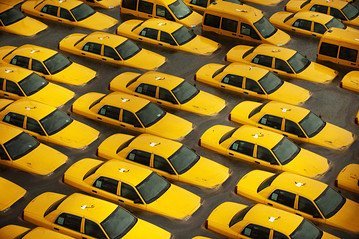Hammer Time: the Used Car Flood After Sandy, and How Not To Get Soaked

The dangers lurk elsewhere: In your neighbor’s driveway, on eBay, in the classifieds. Read this story if you don’t want to become a belated victim of Sandy. Katrina changed the landscape when it came to flood damage vehicles. Most of the 600,000 vehicles in the zone of that hurricane were classified as flood damage by their respective insurance companies. It was law. Pure and simple. The owners of Carfax and Autocheck even went so far as to offer special warnings to buyers on any vehicle with a VIN# that was registered in the region of Katrina’s flooding. The same law applies to Sandy.
The law solved a lot. But it most certainly did not solve all problems.
There are those car owners who are transients and simply find themselves in the wrong place at the wrong time. Those cars will never get the voluntary mark of caution unless they contact their insurance company. Among them, along with the general population of a flood damaged area, you will have folks that either don’t have insurance at all or carry the minimal amount.
Flood damage plus liability equals zero payout for many folks who are now involuntarily in the market for a used car.
Some of their vehicles are flooded to the point of no reasonable return. The ones that have been damaged, but are still in running order, are usually either traded in to dealerships of varying types. Or sold to folks who simply don’t know any better.
A lot can be said for the watermarks you can find in carpets that are exposed to sitting water over the course of time. The noxious smells that remain in a car after a flood, and even the absolute destructive nature of all things saltwater to electronics, seals and metals. Although the damage to electronics is often immediate and irreversible, the other two simply work their magic over the course of time.
The damage to those major components along with the braking and steering systems are what will turn a once perfectly good car into a rolling deathtrap.
Everyone imagines someone taking out the carpet and simply power washing their way out of the damage. Even if the damage was apparently low around the car’s beltline, the amount of work needed to replace everything will still be extensive.
In the real world you may be looking at a replaced carpet, a scrubbing and bleaching down of the bare metal, sometimes replaced seats, certain suspension components, brake lines, tire related sensors. sensors, and a few other choice components. Unfortunately, the ones who do this type of work may prioritize their own financial interest over your future well-being.
So for those of you who are looking for a break on a flood damaged car that has seemingly little more than minor cosmetic issues, my advice is to steer clear. Stay far, far away.
Many of the models that are popular in overseas markets, and still in running order, will wind up exported. While a few of those that are perhaps more in lines with purely domestic tastes will remain in the domestic market. A treatise can be written on how to spot flood damage vehicles. 99% of you will simply be better off with the cliff notes version that can be found right here. Along with this should come two big sentences that should repeated like a mantra whenever buying a used car.
“Always get a vehicle inspected by an independent mechanic. Preferably one that specializes in that particular marque.”
If a mechanic sees hundreds of versions of the same vehicle over the course of the year, it will usually be a lot easier for them to identify flood damage related issues than if they saw hundreds of vehicles of varying types.
Familiarity breeds knowledge when it comes to cars. So get any car you wan to buy inspected; regardless of whether you suspect flood damage or anything else.


